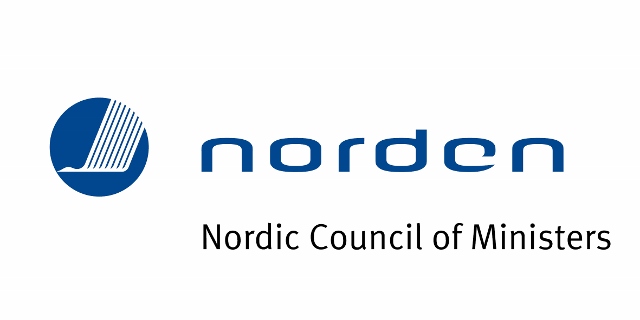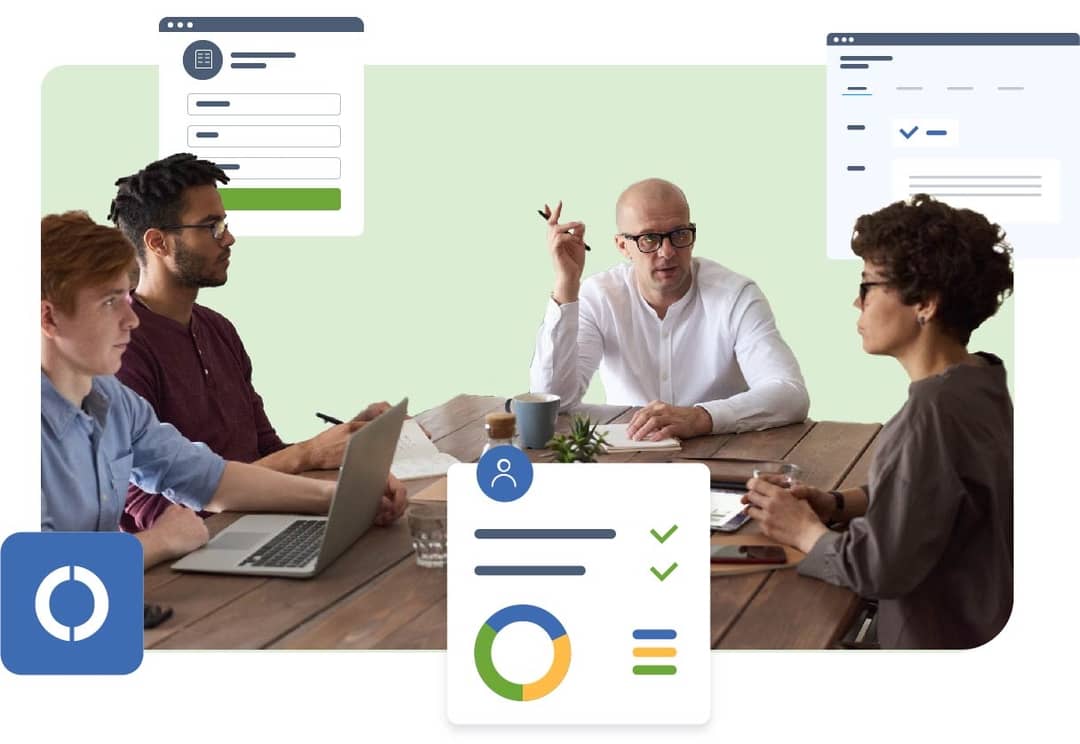Read about the newest collaboration tool from the https://technologyadvice.com/social-collaboration-software/
Introduction
Social collaboration software (SCS) is a vast marketplace of platforms designed to handle everything from knowledge management to enterprise application development. Businesses looking for an enterprise collaboration solution are faced with a daunting task: they must compare innumerable vendors and products, but also decide what social collaboration software means.
This buyer’s guide to social collaboration tools will arm you with the information necessary to navigate the marketplace and begin narrowing your search.
First, we’ll attempt to define social collaboration software, including some analogous terms and common features. We’ll provide an outline of major categories for social collaboration and example solutions within each. Finally, we’ll discuss social collaboration software market trends and provide a case study of a leading vendor.
What Is Social Collaboration Software?
Defining social collaboration is like battling the mythic hydra; as one category is defined, two more grow in its place. Enterprise social networking, business collaboration, enterprise collaboration, enterprise messaging, social intranet, enterprise social and on — you get the picture. We’ve not even mentioned the sheer redundancy of the using both “social” and “collaboration” to describe a software platform.
According to Wikipedia, social collaboration “refers to processes that help multiple people or groups interact and share information to achieve common goals.” They further qualify social collaboration by saying its “natural” environment is on the Internet, and that it is “group-centric.”1
By that definition, any community working online towards a common goal is engaging in social collaboration. For the purposes of this guide, we’ll define social collaboration software as web-based tools that encourage the sharing of ideas, division of effort, and group-wide accountability.
Companies can even use social collaboration tools to communicate one-to-one, one-to-many, or many-to-one, when threaded, forum-style discussions or wikis are used. They can be project or process-focused, customer-focused, messaging-focused, or any combination of these.
Social collaboration software can be a single platform that serves an entire enterprise, department, or team, or it may be an amalgamation of solutions that together form a collaborative, virtual work environment.
Despite the many-headed nature of the social collaboration beast, for the purposes of this guide, we’ll use four main subcategories:
I. Enterprise Communication
Probably the most recognized social collaboration category, enterprise communication platforms are essential in a world where widely-distributed, remote teams are becoming more common than co-located teams.
Whether it’s via an internal social network with threaded discussions and newsfeeds, such as Yammer or Jive, or through an instant messaging-centered platform like Slack, this category of social collaboration tools focuses on the exchange of knowledge, usually in an indexed, searchable database with unique user logins and options to communicate one-to-one, one-to-many, or many-to-one.
Of course, these solutions are not necessarily limited to the above functions. Many have a file sharing component, employee engagement tools such as pulse surveys, a public calendar, video conferencing, wiki/knowledgebase, etc. Some even offer telephony, either built-in, or via integrations with VoIP providers.
In some cases, enterprise social tools can be used to communicate with external users as well as within your own company. One example would be a product knowledgebase where employees collaborate with customer “power users” to ask and answer support questions, or elicit consumer feedback for product design.
**Leading Vendors: **Slack, Zinc, Jabber
Read More:
- 6 Slack Alternatives to Try Before You Commit
- 4 Brilliant Ways HR Managers Can Solve Internal Communication Problems
Note: Some may classify mobile device management (MDM) or bring-your-own-device (BYOD) tools under the umbrella of enterprise communication, however, for the purposes of this guide, we’ll focus instead on instant messaging or social network-style platforms. If you’re looking for these types of solutions, we invite you to visit our MDM/BYOD Product Selection Tool and Guide.
II. Enterprise Content Management
Another common type of social collaboration platform, enterprise content management systems are quickly gaining traction among business users. This is especially true for sales and marketing teams, as content marketing and sales enablement become increasingly important functions.
Of course, collaborative content management platforms are important to departments beyond sales and marketing. IT may rely on a collaborative content management solution to distribute reports, warehouse data for ETL, or provide the backbone of an internal helpdesk system or corporate intranet. HR can utilize enterprise content management platforms to distribute and collect new hire documents.
Solutions in this subcategory provide a collaborative sandbox where employees can work together on documents or multimedia. They may also include a development environment for platform-hosted systems (such as Microsoft SharePoint), a text editor and publishing platform (such as WordPress), an automatic backup component (such as Box or Dropbox), and other collaborative, content-centered functionality.
Irrespective of type, most content-focused collaboration solutions will offer user and/or role-based permissions, a search function, file versioning, synchronization, audit control, and a method of commenting/reviewing individual pieces of content.
**Leading Vendors: **Box, Dropbox, SharePoint
Read More:
III. Embedded Social Collaboration
Collaborative functions are being embedded into an ever-increasing number of software solutions. Whether project management software, customer relationship management platforms, service management tools, HR systems, or the never-ending parade of new marketing tools — nearly all of these categories were conceived to reduce reliance on communication via third-party platforms and provide a single version-of-truth.
Most of the categories on TechnologyAdvice.com contain solutions that offer some form of embedded social collaboration. In the interest of brevity and clarity, we won’t delve further into embedded social collaboration tools, save to direct you to the various Product Selection Tools we offer for solutions in these categories.
- Project Management Software
- Customer Relationship Management Software
- Business Process Management Software
- Customer Service Software
- Human Resources Software
IV. Social Collaboration Suites
Last but certainly not least, the rise of collaboration suites — platforms with functionality from all three categories we’ve outlined — is not to be ignored.
Google for Work (Hangouts, Docs, Sheets, Drive, Slides, etc.), Microsoft Office 365 (Word, Excel, OneDrive, Lync, PowerPoint, etc.), and similar solutions offer an end-to-end solution with ubiquitous access for the whole enterprise. You can implement communication, sharing, productivity, networking, and collaboration solutions as part of a single platform, at an affordable, per-user price.
**Leading Vendors: **Google for Work, Office365, IBM Connections
Social Collaboration Trends
Businesses are turning to collaborative tools for myriad reasons — to consolidate and distribute knowledge from veteran employees to new hires, to improve workflows across departments, or simply to reduce the number of “Reply All” emails. Collaborative software systems can increase operational efficiency, decrease errors, and improve consistency in communications and delivery.
As workforces become more widely distributed, and as your employees interact with one another across different geographies, the necessity of social collaboration software will only increase.
With the best social collaboration tools, your headquarters can be located in New York, your customer support team can be in the Midwest, and your development team can be located overseas. All the while, you maintain an accessible location for your clients and enjoy the benefits of lower cost-of-living for the rest of your business.
The social collaboration software market is still relatively young, and some major players have yet to make their debut. I.e. the oft-delayed Facebook for Work. Mergers and acquisitions, product consolidation, and the rise of middleware such as Zapier and IFTTT are other factors that should speed development and adoption.
Will social collaboration tools replace your corporate intranet, email, or telephone? Yes and no — some businesses are better suited for these solutions than others.
Read More:
- The New Workplace: Why Flexible Working and Telecommuting are Taking Over (Infographic)
- What Workplace Collaboration Will Mean in the Future
- Why Office Collaboration is Essential in the Modern Workplace
Social Collaboration Case Study
Organization: Rural Health Network of Oklahoma2
Solution: Zinc
Established in 2008 through a grant awarded by the U.S. Department of Health and Human Services, Rural Health Network (RHN) of Oklahoma focuses on improving quality access to healthcare for people living in rural Oklahoma. With 16 member healthcare organizations, spanning thousands of employees, Rural Health Network provides timely support and consultation to ensure continuous, high-quality care delivery across each location.
The Problem: How Can We Communicate Quickly While Staying HIPAA-Compliant?
With members spread across a dispersed geographic region — some working at desks, on the move in hospitals, and others on the go between locations — fast and efficient communication was essential to keeping everyone on the same page.
The RHN team identified the need for a mobile communication solution to keep their partners and providers connected.
“Given the nature of our work, having a secure, HIPAA-compliant communication channel is critical. We were interested in finding a solution that was faster than email, works across devices, and meets the security needs of the healthcare environment.”
— Josh Braziel, Health Technology Coordinator, RHN
Josh and his team are constantly exploring new tools and solutions that could improve communication, collaboration, and efficiency. He started exploring a variety of HIPAA-compliant messaging solutions and then discovered Zinc.
He began to introduce Zinc to an initial portion of the staff and providers and encourage coordination through the app.
“Our staff liked that Zinc combined the familiar experience of texting with additional features to enhance their workflow such as voice memos, location sharing, and the ability to stay connected regardless if they were using a smartphone or desktop,” Braziel said. Based on their initial successes, RHN decided to expand usage across their network.
The Results: Faster Coordination and Cohesion Across the Network
- Personal and work messages naturally separated between apps
- Secure, HIPAA-compliant communication for a dispersed workforce
- Give network members faster, easier access to each other
- On-demand support and coordination throughout care operations
“We chose Zinc because it was clear this tool was built for teams like ours. We could securely collaborate no matter where we are, enabling us [to] deliver quality service to our network,” Braziel said.
Since introducing Zinc, Josh and his team have noticed they have been able to get things done faster. Whether they’re resolving a hospital IT issue, consulting a member on electronic health records (EHR), or putting together a network-wide educational workshop, it’s simple to coordinate on Zinc. Josh and team are continuing to expand Zinc to additional use cases and members across the network.
Choosing the Best Social Collaboration Software
You’re probably reading this guide because you need to know how to select the best social collaboration tool for your business. We’ve assembled user reviews, product comparisons, review videos and guides (like this one) to help with your decision.
To narrow your options and get a custom software recommendation based on your needs, use our Product Selection Tool. If you’d prefer human assistance, our unbiased Technology Advisors are available for a free consultation. Call, click, or email.
Have Questions?
Our team of experts is ready to help! 877.824.6745
Sources
- “Social Collaboration,” _Wikipedia, _https://en.wikipedia.org/w/index.php?title=Social_collaboration&oldid=733505164. Accessed August 15, 2016.
- “Case Study: Rural Health Network,” Zinc, http://content.zinc.it/CaseStudy_RuralHealthNetwork.pdf. Accessed August 15, 2016.















Leave A Comment